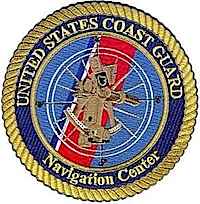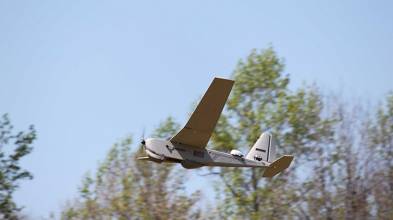
Ligado Networks, the enterprise formerly known as LightSquared, released partial results from their tests of GPS receivers last week, a step one expert suggested might be aimed at easing a political decision to move the project forward before the completion of an ongoing federal interference study.
Ligado Networks, the enterprise formerly known as LightSquared, released partial results from their tests of GPS receivers last week, a step one expert suggested might be aimed at easing a political decision to move the project forward before the completion of an ongoing federal interference study.
The company provided the results from its testing of 10 devices: seven Garmin general navigation receivers, two Samsung cell phones, and a receiver-equipped Motorola in-vehicle work station like those used in police cars or delivery trucks. The tests were entirely done using a signal simulator but incorporated data captured during a drive along a test route to recreate a receiver in motion.
The receivers being tested ran for two hours inside the simulator to establish a baseline tracking GPS and the Wide Area Augmentation System (WAAS) signals and then an LTE or Long-Term Evolution communications signal was added starting at a power level of -80 dBm. The receiver’s position accuracy was recorded for three minutes, at the end of which the power was stepped up 10 dBm for another three-minute run. This step-up procedure was repeated until the receiver either lost lock or the maximum LTE power was reached.
For the Garmin and Motorola devices, the position error fell within the range seen with the GPS signal by itself.
"The testing of the Garmin devices was largely done and, frankly, not to our surprise, it does show that the Garmin devices are operating with no impact whatsoever from LTE operating in the adjacent band," said Gerard Waldron, a partner with the law firm Covington & Burling LLP, which is representing Ligado Networks.
The phones were able to pass tests of location accuracy, dynamic range, and sensitivity at the -20 dBm LTE received level, the firm said.
Waldron said they were releasing this data at this time in a response to a question posed, apparently by a Department of Transportation (DoT) representative, during a briefing. The question was whether an agreement struck with Garmin ending a lawsuit between the two companies, and the associated changes to Ligado’s power limits and spectrum plans, actually protected Garmin devices.
"We did not observe any impact in the position accuracy of these devices in those frequency bands at the expected power levels that would be produced by the Ligado license modifications and coexistence agreements," said Ken Zdunek, the chief technology officer at Roberson and Associates, which conducted the tests for Ligado.
The testing is nearly complete, Zdunek told reporters on February 24.
"There are a couple of devices that are still being put through their paces," he said, adding that the testing team is primarily engaged in analysis at this point.
Missing Data
The firm, however, did not release data from any signal acquisition testing, a vulnerable process for receivers, saying it was still being analyzed. Moreover, they would not commit to releasing the raw data unless specifically asked to do so by the Federal Communications Commission (FCC).
If the FCC asked for the data to be placed in the record, said Waldron, "we absolutely would be happy to do that."
"I think they have to commit to releasing all the data; that’s where all the bodies are buried," said GPS signal expert Logan Scott. “It needs to be an open and unbiased process if you really want to do this right."
Scott, a consultant specializing in radio frequency signal processing and waveform design for communications, navigation and other systems, said the tests outlined in the Ligado charts were not a bad place to start, but were oversimplified in places and made assumptions that needed to be assessed further. The tests also failed to incorporate the environmental realities that receivers deal with daily.
"All of their results are showing situations where the GPS signal environment is unimpaired," said Scott. "What I mean by that is that the signal is all there, there’s no fading, no buildings — it’s basically open sky conditions."
Scott also took issue with Ligado’s assertion that position error as experienced by a user was a better indicator of interference than degradation in the signal-to-noise ratio (C/N0), a standard being used by the DoT for its Adjacent Band Compatibility Study. Degradation in C/N0 does not accurately predict GPS position performance, Ligado argued in its presentation, or the impact of interference from signals in neighboring bands.
The signal-to-noise ratio is not meant to predict position, said Scott, it’s about reliability.
"It’s pretty well-known that a GPS receiver, as long as it’s tracking satellites, it’s pretty accurate. You have to throw a lot of interference at it before it actually loses lock — in other words, before you can’t track the satellite," Scott told Inside GNSS.
Therefore, if you rely on position accuracy as your metric, he said, "you’re not perceiving the risk."
The signal-to-noise ratio can go way down, Scott said, and along with it the reliability of the receiver information and your ability to deal with an impaired environment — but your accuracy will be good right up until the point the signal is lost. "C/N0 is a safer measure."
Using position accuracy to measure interference skews the results, he added, and puts GPS receivers at risk of failure under actual operating conditions.
"By substituting position error for C/N0 degradation you’re basically building in a strong case for LTE, in other words allowing very high levels of interference — damaging levels of interference."
Providing Cover
Ligado’s desire to discredit C/N0 as an interference measure is linked to the ABC Assessment, said Tim Farrar, a mobile communications expert with TMF Associates.
"LightSquared [i.e., Ligado] wants to move expeditiously to get to a conclusion here, and the biggest potential source of delay is the ABC study," Farrar explained. "If that progresses along what has been a very slow timetable to date, it could push a conclusion and a report on the study results out by many months at least. LightSquared really doesn’t want to wait that long for the FCC to move forward. So, doing this testing is an attempt to put information into the record that would give the FCC some basis for moving forward without saying, ‘We can’t do anything until the ABC study is done.’"
The rush is being fueled financial realities, suggested Farrar, plus an eagerness to start the long process to get a 3GPP band class assignment and boost the salability of the spectrum. There is also likely a strong desire to wrap things up before the end of the Obama administration.
"If it [a decision to proceed] slips beyond the current administration, firstly there’s uncertainty about who will be in charge and secondly there will be new commissioners and those people will require time to be confirmed and get their feet under the desk,” said Farrar. "So, I think it’s reasonable to expect that if things are pushed beyond December, then there would be a delay of 6 to 12 months before things move forward any further."
With its debts mounting, Ligado would find such a delay very costly, he said, and Ligado wants the FCC to act. Even though the test results released last week were quite limited, they could help provide an avenue for what Farrar said is perceived to be a political decision.
"LightSquared is trying to give the FCC some political cover for why they might move forward," he said. "Whether they will be successful or not it’s hard to know, but that is the objective — to provide some justification for the FCC to do stuff."
Test results were released on the following receivers:
Garmin eTrex H
Garmin GPSMAP 76 CSx
Garmin GPSMAP 78 SC
Garmin Montana 650t
Garmin Nuvi 2495LMT
Garmin Nuvi 255LM
Garmin Nuvi 2597LMT
Motorola MW810
Samsung Galaxy S5
Samsung Galaxy S6





